Table of Contents
Applications for Sterile 3D Printing
Sterile 3D printing materials provide new capabilities for manufacturers in aerospace, auto, engineering, and medical device industries, but also for the production of sterile, end-use parts. Medical device manufacturers, aerospace sciences, and sterile compounding facilities all stand to benefit from rapid prototyping tooling, parts, molds, or fixtures that can be delivered to the production floor with minimal risk of contamination. Instead of relying on mass-produced, one-size-fits-all items, 3D printing delivers labware, fixtures, or tooling faster and cheaper.
Considerations for FDM Printing Sterile Parts

How Does 3D Printing Work?
3D printers materialize parts autonomously from digitally designed files thus allowing physical testing of form, fit, and function in a matter of hours with minimal post processing or curing. The design freedom and low-cost structure of 3D printing enables complex geometries, uncommon shape or size requirements, and integrated design features without extreme engineering, design, and manufacturing costs. Importantly, researchers find that the process of 3D printing itself, which generally involves pressurized extrusion of a heated, non-sterile filament, closely resembles the pasteurization process.
The success of sterile 3D printing varies based upon use of materials, technology, design requirements, post-processing, and the capabilities of the 3D printer itself. For this article, the focus is FDM (Fused Deposition Modeling) technology. Much like a hot glue gun, FDM processes feed thermoplastic filament through a print head, which is melted at high pressure and at relatively low temperature 302°F – 572° F (150°C-300°C), and then deposited micron-layer-by-micron-layer onto a stationary print tray. Heated print trays and enclosed chambers aid and maintain an ideal ambient temperature which improves adhesion, safety, consistency, and eliminates warping, particulate, and airborne toxins. Because materials, fluid dynamics, and pressure varies throughout a build, establishing protocol and verification of sterile parts requires highly controlled research and testing.
Current Research for Sterile 3D Printing Applications

Sterile 3D Printing Case Study
The current arena for research related to sterile 3D printing outcomes is small in scope and far from exhaustive. This study at Michigan State University demonstrates the efficacy of 3D printed material after undergoing the heat and pressure of extrusion. The future use of 3D printers in labs, cleanrooms, and biological sciences requires overcoming a wide variety of cellular culture conditions known to enrich microorganisms. 3D printed parts, particularly FDM, present challenges for sterilization avoided by traditional labware made of glass or alloys. The thousands of layers composing each finish 3D printed part create a porous surface which may impede post-print sterilization.
The experiment is detailed as follows:
“Two printed cylinders were transferred to sterile glass tubes filled with 4mL of LB media with flamed tweezers. A fragment of unused filament was used as a positive control, and an uninoculated tube was used as a negative control. Tubes were transferred to a shaking incubator set at 30C. No growth was observed after 24 hours in any of the tubes with printed parts, while the unused filament contaminated the media. After two days, another cylinder was printed and incubated in LB broth. Again, after 24 hours no growth was observed. None of the tubes with printed parts showed signs of growth after 96 hours.”
“Our experiments indicated that there are several reasonable approaches to sterile technique, though we did not attempt to establish which among them is optimal. We anticipated much higher rates of contamination than were observed. In more than twenty incubations, we found only two contaminated parts. Based on plating, light microscopy and 16S rRNA sequence obtained from the culture and on the fact that other parts prepared in the same way failed to produce growth, it is likely that the part was contaminated after printing. These experiments are not intended to establish a quantitative measure of the rate of contamination characteristic of the process, but rather to demonstrate that sterile parts can be produced by direct 3D printing of non-sterile thermoplastic feedstock.”
The important takeaway from the study highlights 3D printing as an adaptable platform for sterile processes used in critical manufacturing, sciences, or experiments in clinical microbiology, cell culture, and molecular biology. 3D printers capable of FDM builds demonstrate properties of intrinsic sterility: high heat cycles, high pressures, and prolonged thermal contact duration.
Sterile 3D Printing Materials for Autoclaving and Medical Applications
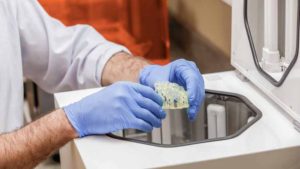
Advances in 3D printing materials fast track success in sterile spaces, aseptic environments, and clean-forward spaces. Achievements of ultra-heat resistant, biocompatible, food certified, and 10993/USP Class IV documentation highlight an ever-growing need for 3D printed materials free of pathogenic microbes or other contaminants.
Dental applications pioneer the use of sterile parts for patient specific applications. The creation of surgical guides, veneers, drill guides, and abutments require autoclaving for use within a patient’s mouth. MED610, as noted below, is one of the few non-FDM materials capable of withstanding high-temperature sterilization.
Can 3D Printed Parts Be Autoclaved? — Yes and No
One of the largest obstacles for the utility and efficacy of sterile 3D printed parts is not delivery of a sterile print, but instead the sterilization of a part once it’s exposed to outside contaminants. Re-sterilization requires heat, radiation, and chemical processes for bactericidal, virucidal, and fungicidal effect. One of the most demanding and intensive sterilization processes is autoclave sterilization. For the clear majority of commercially-used 3D printed materials, the pressure and heat associated with autoclave cycles easily warp, melt, or compromise the tensile strength and shape of 3D printed parts.
Sterile 3D Printing Materials that Withstand Sterilization Techniques
ULTEM 1010, is a polyetherimide (PEI) with a coefficient of thermal expansion (CTE) about twice that of aluminum. ULTEM 9085 is high-class material developed for aerospace due to its high FST ratings (fire, smoke, and toxicity). It showcases powerful potential for use in the most trying and demanding of environments. As one of the most durable, impact resistant 3D printed materials, ULTEM demonstrates a bright future for further development and use in almost any application.
PC-ISO is a strong, heat-resistant engineering plastic commonly used in food and drug packaging and medical device manufacturing. It is biocompatible, gamma and EtO sterilizable and complies with ISO 10993 and USP Class VI.
Nylon PA is a durable nylon 12 material used for real-world testing and functional end-use parts. This material has a great surface finish and feature detail, low moisture absorption, and good chemical resistance. Nylon PA is also compliant with autoclave sterilization, making it a smart choice for some medical applications.
ABS-M30i works with FDM Technology to build functional prototypes, tooling and production parts that can be gamma or EtO sterilized. This engineering thermoplastic has a good mechanical strength and complies with ISO 10993 and USP Class VI.
PPSF/PPSU combines excellent heat and chemical resistance and good mechanical strength. It can withstand a variety of sterilization methods including steam autoclaving, radiation and ethylene oxide.
PEEK material is tough, strong, and rigid and has superior “creep” resistance. With its strong resistance to hydrolysis, PEEK can withstand boiling water and super-heated steam used with autoclave and sterilization equipment at temperatures higher than 482° F (250°C). PEEK has a density that is at least 5 time less than most technical metals, but it’s capable of withstanding mechanical loads necessary in most engineering operations while also being approved by the FDA for food contact applications.
MED610 is a biocompatible material used to create surgical guides, splints, and dental delivery trays. This material is proven safe for intraoral surgical procedures in contact with skin and mucous membranes as well as autoclave sterilization.
A new, unnamed material developed from a host of collaborators, spearheaded by Techmer PM, is challenging the previous limits of temperature and pressure enabling repeatable autoclave cycles for 3D printed parts. During testing, the 100% 3D printed tools successfully endured multiple autoclave cure cycle, withstanding temperatures over 355 F and pressures of 90 psi.
*Material descriptions sourced directly from embedded links*
Materials Which Pass All Common Sterilization Tests
In this test, a host of FDM materials are visually inspected after exposure to five types of sterilization: autoclave, flash autoclave, ethylene oxide gas (EtO), hydrogen peroxide gas plasma, and gamma radiation. Of the nine materials tested, only three passed visual inspection after testing without showing damage: PC-ISO, PPSF, and ULTEM 9085.
Conclusions
The noted experiments indicate that non-sterile thermoplastics expended by direct 3D printing meet the demands of sterile production. The current trajectory indicates that materials and technology will continue to grow in accessibility and capability, therefore making these technologies more realistic for common use. The chemistry of 3D printed materials is heavily guarded, and often proprietary. Growth in the 3D printing industry and the entrance of new competitors continue to tighten the grip on information, increase enforcement of intellectual property, and limit sharing of trade secrets. Because materials and processes for developing 3D printed materials are kept as closely guarded secrets, secondary markets for 3D printed parts slow market growth for less explored applications.
For any use, consulting with a 3D printing expert is recommended ensuring intended use aligns with a manufacturer’s best practices.
Related Posts
-
Filament Storage Cabinets for 3D Printing
Notably, filaments such as nylon may absorb unacceptable amounts of water in the short period of time they are on the printer. This cabinet provides active feedports for use during prints, and long term storage…
-
BOFA Fume Extractors for 3D Printing
3D printers are known to produce a number of byproducts during operation. Common 3D printing filaments such as ABS and PLA are known as high emitters of ultra-fine particulates (UFPs), while nylon and PCTPE are…
-
Filament Storage, Dry Boxes and Spool Cabinets for 3D Printing
Are you ruining your 3D printing filaments by baking them? What's the best way to dry FDM and PLA filaments? What about Nylon and PLA?
-
3D Printing Fume Extractors for Odors and Particles
Does a HEPA filter capture ultrafine particles (UFPs). What toxins does 3D printing produce? Why should every 3D printer have both a activated carbon and HEPA filter?
-
ISO 13485:2016 Medical Devices
ISO 13485 is designed for use throughout the life cycle of a medical device. It supports each stage of medical device development and operation from initial concept to production and disposal. The standard helps internal…
-
How to Remove 3D Printing Support Material Faster and Improve Final Quality
What's the easiest and fastest way to clean 3D printed parts with soluble support materials or standard support materials like HIPS and PVA? Here's how to clean the reaches of 3D printed parts including small…

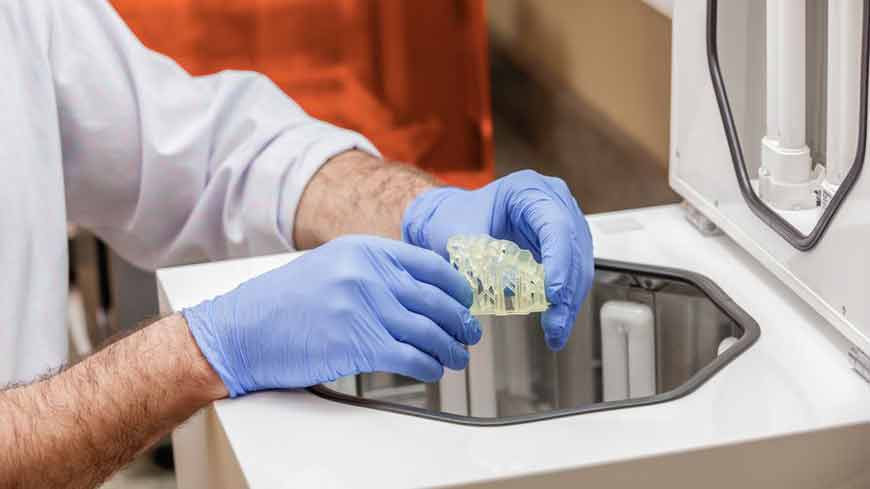
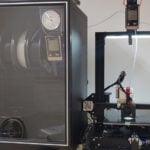
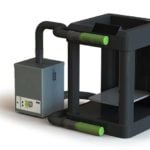

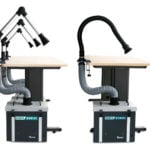
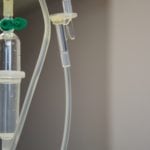
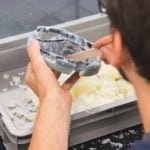



4 thoughts on “Sterile 3D Printing Materials for Medical Devices”
Very useful information. Thanks! My question is what affordable printers can use these higher temperature materials and if it’s not cost effective are there printing services that can do this? I’m pretty sure that my Robo3D cannot use these materials. Any feedback would be appreciated.
What if we can even go for aseptic 3D printing. “zero” contamination level. no need for downstream sterilization. would that be interesting?
Ghommes, yes indeed, that would be interesting. Some of that technology is now starting to emerge. A type of closed isolator for 3D printing probably isn’t that far off.
https://www.plasticstoday.com/medical/new-3d-printers-build-chamber-can-be-converted-cleanroom/136302115661323
Comments are closed.